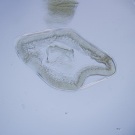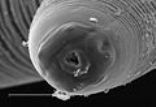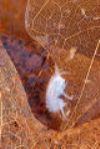Anisakis simplex
A Marine Parasite
Habitat, Nutrition, and Adaptions
Habitat
The lifestyle of Anisakis simplex, as a parasite, creates some limitations in habitat. This organism can only thrive where its three hosts- crustaceans, fish and squid, and marine mammals- live simultaneously. For this to occur, temperatures and water salinity must be permissive to all of those life forms, including the swimming Anisakis simplex larvae. There is a wide geographic distribution of these organisms, as there is a wide acceptable range of values for these factors in relation to organism survival. However, Anisakis simplex are not generally found in waters of low salinity, as some of their hosts seem to be intolerant to this condition.
 Nutrition
Nutrition
In suit with its parasitic lifestyle, Anisakis simplex obtains its nourishment by taking nutrients from its host's intestine, after burrowing into the mucosal walls. The organism itself has no circulatory system, so transport, digestion, and storage of food is undertaken by fluids present in the pseudocoelum.
Adaptions
In its attempt to survive and complete its vicious cycle, Anisakis simplex has developed a number of adaptions that make it more completely suited to enduring the internal responses and physiology of its hosts. As the parasite must obtain its nutrition directly from its unique habitat, most adaptions address any difficulties presented by either of these, in one step. Adaptions include the following:
~A narrow, tapered body for ease of movement through the host's tissues.
~Movement is not dependent on water or any
outside force; it contracts the longitudinal muscles that
run the length of its body, and this produces a thrashing
motion.
~Secretion of a cuticle that protects it from digestive enzymes.
~Three lips are present on an anterior mouth and are suited for eating and burrowing.
~Secretion of biochemicals to evade the host's immune system.
~Presence of caudal papillae, which serve as chemoreceptors, to detect the conditions of their environment.


